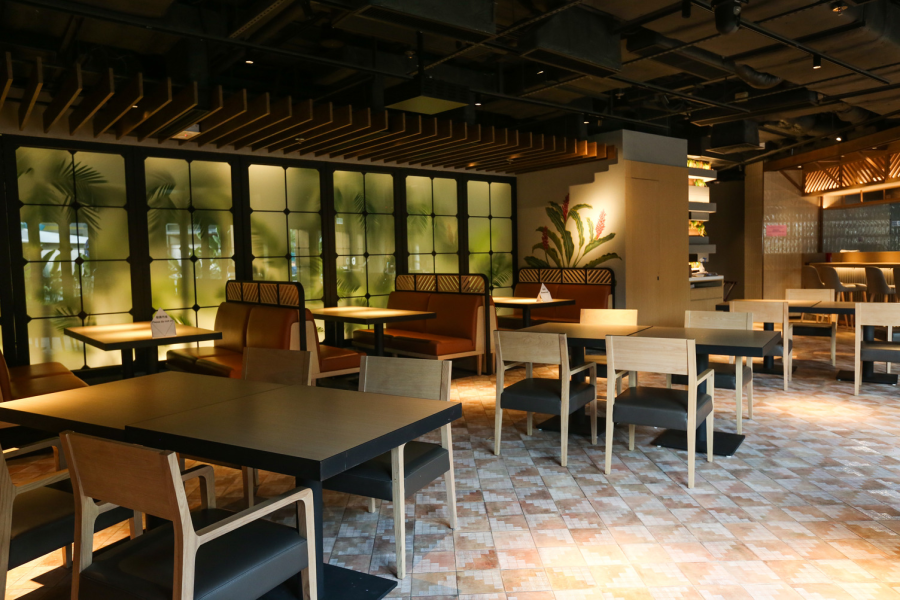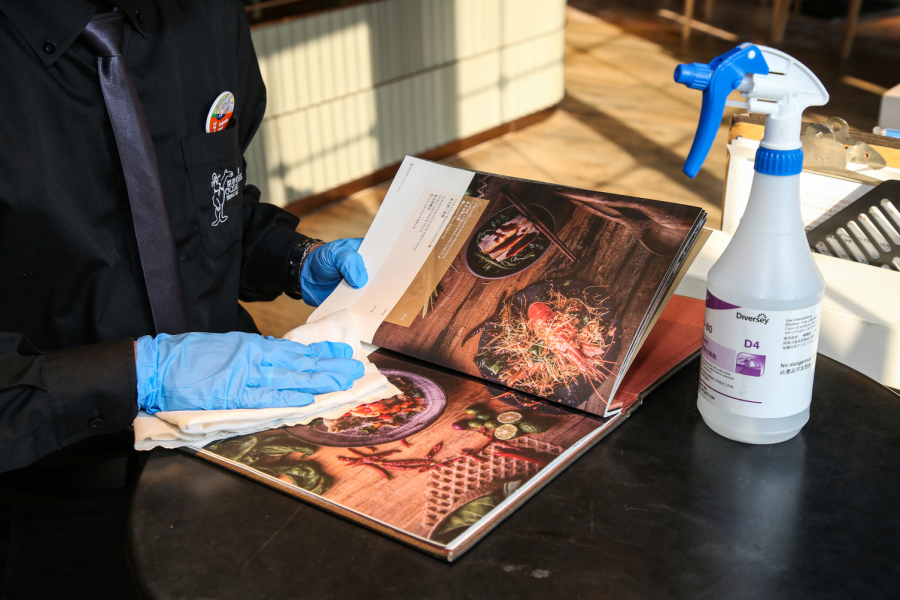How Social Distancing Changes Operations and Design

Social distancing has fundamentally affected the day-to-day operations of attractions, especially as places originally designed to maximize the density of people in limited spaces. Now, reopened theme parks and water parks around the world find themselves limiting daily capacity, requiring advanced reservations, introducing virtual ride queues, and modifying experiences to encourage physical distance among visitors and employees.
Here’s how several park operators have adapted to the realities of social distancing to keep their guests and staff safe during the era of COVID-19.
Crowd Control Starts Online
Many attractions are finding the extra space needed for social distancing by reducing the number of guests admitted to their parks. For instance, at Ocean Park Hong Kong, “the park’s maximum instantaneous in-park capacity of 36,300 has initially been reduced to 9,000 since mid-June 2020, which would gradually increase depending on the Hong Kong government’s pandemic control guidelines,” says Johnny So, park operations director.
Hot Park in Rio Quente, Brazil, is also selling tickets online to control crowds at the water park and minimize point-of-sale interactions between customers and staff. “On arrival, the guest just shows their QR code at the gate,” says Hot Park CEO Francisco Costa Neto. “They then receive a bracelet enabled with RFID (radio-frequency identification) technology linked to their credit card account, where all their in-park expenses are charged.”
Redesigning Park Layouts to Keep People Apart
The fact that theme parks aren’t designed to support social distancing motivated the United Kingdom’s Alton Towers to go back to the drawing board. “We effectively redesigned the park layout to remove bottlenecks and pinch points,” says Jonathan Ellis, Alton Towers’ health and safety director. “The best way to maintain social distancing is to establish an even flow from the car parks, through admissions, around the park, and onto the rides.”
Alton Towers alerted its guests about the changes “so they know how to behave when they arrive,” Ellis says. “We are doing this through a number of channels, from an early blog setting out the principles we were working to, to videos and messages on social media and in email correspondence.”

Clearly Marking Social Distances
To make it easier to achieve appropriate physical separation between guests at the U.K.’s Southport Pleasureland, “social distancing markers have been put on the floor in all areas where queuing takes place, including all rides, F&B (food and beverage) outlets, and entrance and exit gates,” says Southport Pleasureland CEO Norman Wallis. To make the experience more palatable, “technology is used to enhance the guest experience in any areas where they may be waiting or queuing,” he says. “Our goal is to make this guest experience more interactive and interesting so that it is enjoyable rather than something to be endured.”
Brazil’s Hot Park expanded the idea. “We have created characters who interact with the guests in the waiting lines, animating and distracting them while promoting the protocols in a playful way,” says Costa Neto.

Extending Social Distancing Everywhere
The high-density model that underlies theme park design applies to all aspects of the operation, not just ticket sales and ride queues. This truth applies at Tivoli Gardens in Copenhagen, Denmark, which implemented social distancing throughout its entire facility.
“On all fast thrill rides, guests are provided with free face masks as a requirement to board the rides,” says Tivoli Park Architect Mikkel Trudslev Jensen. “On smaller rides for kids where guests are separated, Tivoli has made custom visors for our staff in order to protect both guests and staff. During smaller events on stages, security monitors the number of people gathered, while seating is labeled with a kind reminder, ‘You are allowed to sit here, if you know the person next to you.’”
“Tivoli has also developed an app where guests virtually get in line for the most popular rides,” Jensen says. “When it is their turn, a message is displayed asking them to head toward the ride. This helps to minimize the long queues and clusters of people around rides.”
Clear plastic dividers are found everywhere at Tivoli Gardens, from the entrance gate lines to the F&B takeout counters. “Guests are encouraged to only sit at the same table if they know the person next to them,” Jensen says.
Ocean Park Hong Kong has gone a step further, with tables in all of its restaurants being spaced at least 1.5 meters apart from each other. “The maximum number of people seated together at one table will be no more than that stipulated by the government,” So says, adding that all staff must wear masks, and gloves are required for food handling as an additional safety measure.
“In our shops and kiosks, we’ve marked out social distancing spaces on the floor, and we ask our guests to comply with those,” says Alton Towers’ Ellis. “We’ve also provided additional seating and picnic areas so there are plenty of spaces for guests to stop and relax as a household group without impeding the flow of people around the park.”
Keeping Staff Safe
Parks are also instituting strong measures to keep their staff safe.
For example, the 11 Vietnamese parks operated by Sun World Holding all conduct mandatory temperature checks of staff when they arrive for work and when they leave. “Inside the park, similar social distancing measures are taken for the staff, as well as for guests,” says Daan Duijm, director of operations and set up for Sun World Holding. “They include setting safe distances between staff canteen tables, installing screens at the buffet, and reducing the capacity of rest areas.”
Alton Towers has taken similar measures, along with deploying “hand sanitizer in staff areas and entry points to the park, training them on the new ways of working, and posting reminders throughout the resort,” Ellis says. “Social distancing is enforced in all office buildings, common rooms, and other staff areas.”

The Effort Is Paying Off
Implementing social distancing at parks is no easy matter, but by all accounts, the effort is paying off through guest acceptance and compliance.
“It is working great here,” says Tivoli’s Jensen. “We see a lot of our guests quickly adapting to the new norms and respecting the guidelines and virtual queues.”
Wallis agrees, saying, “What we have seen is that the vast majority of people are being sensible.”
And to keep everyone safe, “our guests have an expectation that we will enforce the rules,” Ellis concludes.
James Careless is a Canada-based writer who covers the attractions industry for Funworld.
